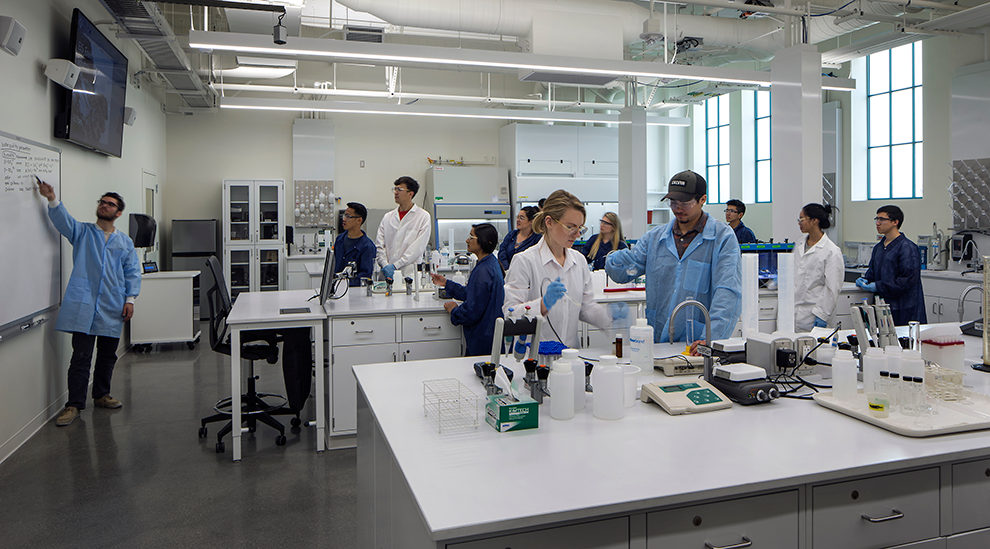Re-wilding the San Diego River
SDSU researchers are working to improve the health of the rivers mountainous tributaries.

On an unseasonably warm December afternoon in the mountains of eastern San Diego County, Boulder Creek’s name feels half-right—hundreds of stony gray outcrops line a dry indentation in the land. In a couple of months, rain will fill the creek up to six feet deep, forming the largest tributary of the Upper San Diego River and eventually emptying into the El Capitan Reservoir.“Once we finally have a baseline, we’ll be able to better plan strategies for improving the health of these tributaries and the river.”
It’s here in the Boulder Creek Preserve that San Diego State University researchers are teaming up with the San Diego River Park Foundation (SDRPF) to study ways to improve the river’s health, from the mountainous tributaries that form its headwaters, through densely populated Mission Valley, and out into the Pacific Ocean.
On a recent visit to the site, SDSU geography professor Trent Biggs and reserve manager Pablo Bryant installed a water monitoring station in a small spring-fed water hole along the creek bed. The instrument, about the size and shape of a fire extinguisher, will continuously sample water conditions—pH levels, oxygen levels, dissolved organic matter, algae, turbidity and more—and transmit the data wirelessly to SDSU and SDRPF officials.
From headwaters to outflow, the river’s health has been compromised by agricultural runoff and urban pollution for so long that nobody has exact baseline numbers to determine what a healthy San Diego River ecosystem should look like. Restoring the river’s health along the city’s urban corridors—the Lower San Diego River—is a priority for both SDSU and SDRPF.
In the months and years to come, the researchers hope to record baseline numbers here in the relatively pristine Boulder Creek Preserve. Even that will take some restoration work. Historically, dense oak tree canopies have shaded the river’s tributaries, preventing breakouts of algae that occur when the water gets too warm. But in recent years, oak borer beetles have killed many of the native oaks along Boulder Creek, reducing that shade. SDSU and SDRPF are working to restore native vegetation by planting new oaks and willows.
Once Biggs and his team gather accurate baseline data from Boulder Creek, they’ll be able to monitor conditions in it and the dozens of other tributaries that form the Upper San Diego River, warning them when algae get too numerous or oxygen levels are getting out of whack—conditions that can affect the health of both reservoirs and the river downstream.
“Once we finally have a baseline, we’ll be able to better plan strategies for improving the health of these tributaries and the river,” Biggs said.
In a separate but related project, Biggs and colleagues are experimenting with ways to directly add oxygen to the Lower San Diego River to prevent the growth of dangerous anoxic bacteria. The work is funded by a grant from the SDRPF. Although it’s not directly related this research, restoring and building a river park in Mission Valley is a central piece of the university’s SDSU Mission Valley campus expansion plan.



